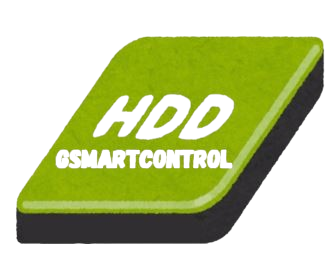Storage drives silently power every computer, yet they’re also one of the first components to wear out. Failures often come without warning, leaving users scrambling to recover data. That’s where GSmartControl steps in. This free, open-source tool gives you a clear picture of your drive’s health by accessing S.M.A.R.T. (Self-Monitoring, Analysis, and Reporting Technology) data and running built-in diagnostics.
Also Read: Step-by-Step GSmartControl Installation: Windows, Linux, and macOS
With GSmartControl, you can run Short, Extended, and Recurring self-tests to identify problems early, plan for replacement, and prevent data loss. This guide explains each test type in detail, walks through how to run them, and shows how to interpret the results.
Why Use GSmartControl for Hard Drive and SSD Health?
Hard drives and SSDs record billions of operations daily. Even minor issues—bad sectors, mechanical stress, or read errors—can turn into catastrophic failures. Manufacturers designed S.M.A.R.T. to monitor those risks, and GSmartControl makes that data accessible and understandable.
Benefits of using GSmartControl software include:
- Running manufacturer-level self-tests directly from your operating system.
- Detecting reallocated sectors and pending sectors before failure.
- Checking both HDDs and SSDs without additional tools.
- Running safe diagnostics designed by drive vendors
- For regular system maintenance, GSmartControl is one of the most reliable utilities available.
Types of GSmartControl Self-Tests
Short Self-Test in GSmartControl
The Short Self-Test is the fastest way to get a snapshot of your drive’s health.
- Duration: 1–5 minutes.
- Scope: Tests electrical and mechanical functions, and samples a small portion of the disk surface.
- Purpose: Detects obvious issues like head crashes or severe surface defects.
- When to Run: Weekly, or whenever your computer slows down unexpectedly.
By running a Short Test in GSmartControl, you catch glaring issues without tying up your system for hours.
Extended Self-Test in GSmartControl
The Extended Self-Test (sometimes called the Long Test) is the most comprehensive check you can run.
- Duration: Several hours depending on drive size.
- Scope: Scans every accessible sector on the drive surface.
- Purpose: Identifies reallocated sectors, unreadable blocks, and long-term degradation.
- When to Run: Monthly, after power outages, or before archiving important data.
Because the Extended Test in GSmartControl covers the full drive, it’s essential for ongoing maintenance.
Recurring / Conveyance Test in GSmartControl
The Recurring Test (also referred to as the Conveyance Test for many drives) targets damage caused by handling or transport.
- Duration: 5–10 minutes.
- Scope: Focuses on mechanical and shock-related issues.
- Purpose: Detects problems introduced during shipping, moving, or installation.
- When to Run: After installing new drives or moving external HDDs between systems.
This test is often overlooked, but GSmartControl makes it easy to run as part of your routine checks.
How to Run Tests with GSmartControl
Install GSmartControl
Windows: Download from the official site.
Linux: Install using your package manager (sudo apt install gsmartcontrol).
macOS: Use Homebrew or MacPorts.
- Open the Program
- Launch GSmartControl, and you’ll see a list of connected drives.
- Select a Drive
- Double-click the drive to open its details and S.M.A.R.T. attributes.
- Run a Test
- Go to the Perform Tests tab.
- Choose Short, Extended, or Recurring.
- Start the test and let it complete.
- Check Results
After the test, open the Self-Test Logs tab in GSmartControl to review the outcome.
Interpreting GSmartControl Test Results
Results typically include:
- Completed Without Error: Drive is healthy.
- Reallocated Sectors: Damaged sectors replaced with spares—safe in small numbers but concerning if they increase.
- Pending Sectors: Unreadable blocks; strong sign of drive failure.
- Test Interrupted: Restart the test for accurate results.
Learning to read GSmartControl results ensures you act before data loss occurs.
Best Practices for Using GSmartControl
- Short Tests: Run weekly for quick checks.
- Extended Tests: Run monthly or after errors.
- Recurring Tests: Run after transport or installation.
- Always Back Up: GSmartControl warns you, but only backups save your data.
- Watch for Growth in Errors: Reallocated or pending sector counts that increase are red flags.
By combining tests with a solid backup routine, GSmartControl helps extend drive lifespan and maintain data security.
Why GSmartControl Self-Tests Matter
Hard drives rarely fail without signs. S.M.A.R.T. tracks these subtle warnings, and GSmartControl gives you the tools to read them. Running Short, Extended, and Recurring tests gives peace of mind and time to react before your storage device fails.
Think of GSmartControl as a health checkup for your drives—fast, non-invasive, and crucial for long-term reliability.
Frequently Asked Questiond (FAQs) About GSmartControl
1. How often should I run GSmartControl tests?
Run a Short Test weekly, an Extended Test monthly, and a Recurring Test whenever a drive is installed or moved.
2. Can I use my computer while GSmartControl runs a test?
Yes, but Extended Tests may slow system performance.
3. Is GSmartControl safe for SSDs?
Yes. SSDs support S.M.A.R.T., and GSmartControl can check attributes like wear level and write endurance.
4. What should I do if GSmartControl shows bad sectors?
Back up immediately. If bad sectors increase, replace the drive.
5. Does GSmartControl repair drives?
No. GSmartControl only diagnoses. It helps you decide when to back up and replace failing drives.
Conclusion
GSmartControl is more than a utility—it’s an essential safeguard for anyone relying on hard drives or SSDs. By running Short, Extended, and Recurring tests, you can track your drive’s health, avoid sudden failures, and keep your data secure.
Incorporating GSmartControl into your regular maintenance routine ensures you stay ahead of potential problems. A few minutes spent testing now can save countless hours of recovery later.
